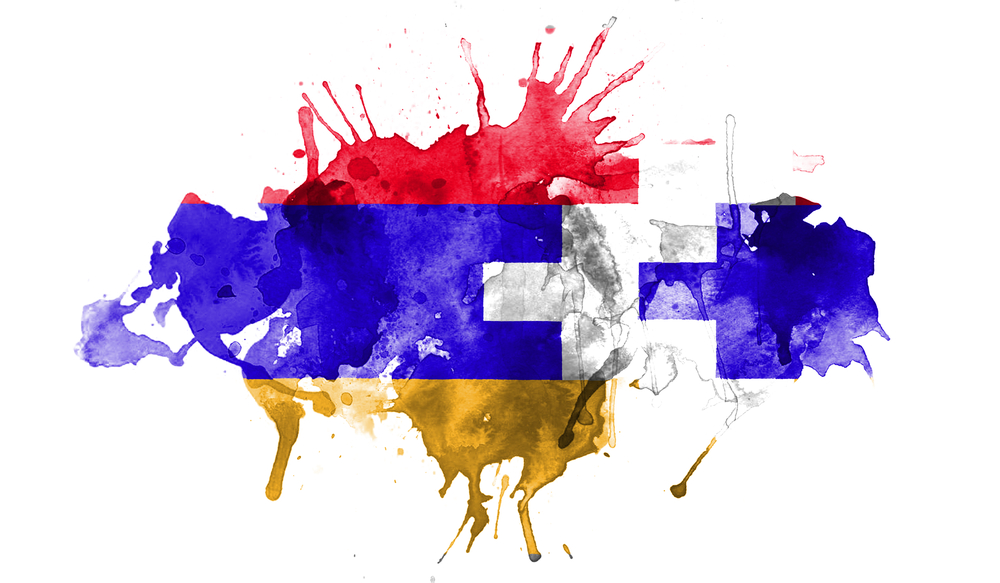Synopsis
The Nagorno-Karabakh region has presented a conflict between Armenia and Azerbaijan for more than a century. The Nagorno-Karabakh region sits within the Azerbaijan borders but possesses a nearly 95% Armenian population – the neighboring country. The conflict was kept stable through brute force during the era of the Soviet Union. Intense fighting broke out in the 1980s as the Soviet Union collapsed. Russia has managed a tense peace between the two nations since 1994. Frequent surges in violence and humanitarian atrocities have marked the South Caucasus contest since then but always held in check through Russian intervention. The Nagorno-Karabakh region is considered the most dangerous flashpoint across post-Soviet Eurasia.
(This backgrounder was updated on October 5, 2020)

The recent outbreak of fighting between Armenia and Azerbaijan over the Nagorno Karabakh region is the most violent since the 1994 war which left more than 30,000 dead and 1 million people displaced. Experts say the new surge of violence caught Russia off guard due to Moscow’s focus on COVID19 and current events in Belarus.
- Additional Read: Military Arsenals of Armenia and Azerbaijan (Al-Jazeera)
A dramatic upsurge of violence beginning Sunday, September 27, suggests the two nations could be heading toward full-scale war. Initial alarms were raised on Sunday when both countries started calling for artillery, tanks, and troops. By Monday, both countries reported rising death and wounded totals. Azerbaijan and Armenia have both called up reserve troops in their respective countries. The international airport in Baku, the capital of Azerbaijan, canceled flights on that same day. On Tuesday, both sides claimed civilian deaths within their national borders resulting from the fighting.
The Nagorno-Karabakh region serves as a potential pivot point for multiple regional geopolitical, energy, and economic concerns that could quickly escalate.
Fact Sheet
- Karabakh is a territory with a mostly Armenian population that sits inside the borders of Azerbaijan.
- Karabakh declared its independence following the collapse of the Soviet Union. Azerbaijan continued to claim the territory while Armenia backed Karabakh.
- War in the Nagorno-Karabakh region in 1994 was among the most violent fighting of the early post-Soviet conflicts.
- Karabakh has an independent government that is not recognized by most of the world. Azerbaijan has not exercised political control over the region since 1988.
- The South Caucasus region is critical for oil and natural gas pipelines transferring energy resources from the Caspian Sea to global markets.
- Azerbaijan is a crucial energy source for Europe and Central Asia, producing 800,000 barrels of oils per day.

Why You Should Care
Russia has defense agreements with Armenia. If fighting spreads into Armenian territory, that could prove enough to draw the Russian military into the conflict. Armenia has already reported sporadic shelling on its territory. In the years since the Nagorno-Karabakh declared its independence and the modern conflict began, Russia has frequently operated as a peace broker between the two sides to prevent violent flare-ups. Russia also supplies the militaries on both sides of the conflict.
Meanwhile, Turkey is allied with Azerbaijan and sees the current conflict as instigated by Armenia. Iran also has interests in Azerbaijan thanks to a sizeable Azeri minority within Iran. Turkey and Russia are already on opposite sides of civil wars in Syria and Libya.
Turkey’s Role
Turkey was the first nation to recognize Azerbaijan’s independence in 1991. The two nations frequently refer to their relationship as “two states, one nation.” Turkey is a central conduit to Azerbaijan’s oil and gas exports. Azerbaijan is heavily invested in Turkey’s economy.
The enmity between Armenia and Turkey dates as far back as the Armenian genocide one century ago. Currently, Turkey has no diplomatic relations with Armenia. Erdogan, the leader of Turkey, has made relations between Turkey and Armenia dependent upon Armenian withdrawal from Nagorno-Karabakh.
Turkey is the third-largest supplier of military aid to Azerbaijan (Russia and Israel are #1 and #2). Several sources allege Turkey has dispatched Syrian mercenaries to the conflict. Turkey denies this allegation.
Russia’s Role
Armenia is a close ally to Russia in the South Caucasus hosting a Russian military base that includes an estimated 3,000 soldiers. Russia has a total of 5,000 soldiers present within Armenia. Armenia and Russia are members of the Collective Security Treaty Organization, an alliance of former Soviet republics. Russia has also developed ties with Azerbaijan since 1994. Russia is the leading supplier of military aid to both sides of the conflict.
Timeline: Nagorno-Karabakh Conflict
- 1805 – Karabakh became a protectorate of the Russian Empire
- 1917 – After the Russian Revolution, Karabakh became part of the Transcaucasian Democratic Federative Republic. This federation soon dissolved into the nations of Azerbaijan, Georgia, and Armenia.
- 1918 – The first Armenian Assembly of Nagorno-Karabakh declared the region self-governing and established its own government.
- 1920 – Bolsheviks took over Azerbaijan. Nagorno-Karabakh signed a temporary agreement with the Bolsheviks that allowed for temporary occupation.
- 1923 – Stalin and the Soviets established an agreement in which Azerbaijan secured Nagorno-Karabakh. Stalin made the deal to lure Turkey, a historical ally to Azerbaijan, toward the Soviet orbit. The iron grip of the Soviet Union squelched fighting between Armenia and Azerbaijan over Nagorno-Karabakh for multiple decades.
- 1987 – Karabakh Armenians submitted tens of thousands of signatures on a petition sent to Moscow that called for a union of Nagorno-Karabakh to Armenia.
- 1988 – Mass protests in the region called for the unification of Nagorno-Karabakh with Armenia. Persecutions of minorities in Azerbaijan and Armenia resulted in a mass movement of refugees between the two countries.
- 1989 – The Armenian Supreme Soviet and the National Council proclaimed the unification of Nagorno-Karabakh with Armenia.
- 1991 – Azerbaijan abolished the autonomous status of Nagorno-Karabakh and brought the territory directly under the control of Azerbaijan. In a referendum at the end of that year, Armenians in Nagorno-Karabakh called for creating an independent state. The Nagorno-Karabakh War broke out at that time.
- 1993 – The Nagorno-Karabakh War resulted in thousands of deaths and hundreds of thousands of refugees on both sides. The war served as a magnet for mercenaries from various nations in the aftermath of the Soviet Union.
- 1994 – The Minsk Group was created (France, US, and Russia) to achieve a cease-fire negotiation between Azerbaijan and Armenia. Russia has been the dominant participant in the Minsk Group. Russia has held the conflict under control, but occasional violent outbursts between the two sides continued after 1994.
- 2005 – The Parliamentary Assembly of the Council of Europe condemned ethnic cleansing by Armenian forces who still held control of some Azerbaijani lands.
- 2007 – Council of Ministers of the Foreign Affairs of the Organization of Islamic Conference condemned Armenia for crimes against humanity and continued occupation of some Azerbaijani lands.
- 2008 – The UN General Assembly called for the removal of all Armenian forces from Azerbaijan.
- 2016 – Parliamentary Council of the Assembly of Europe condemned Armenian forces for crimes against humanity and called for an immediate withdrawal of Armenian forces from Azerbaijani lands. This year saw the most intense fighting in the conflict since 1994.



